Design for Web Part 2
Add to favorites
Designing a Website from Scratch 2
Play video
Learn Sketch
1
Learn Sketch
23:28
2
Powerful Start in Sketch
22:49
3
Design for iOS 11
31:30
4
Design for iPhone X
28:23
5
Designing for iPad
11:36
6
Design for Web
25:12
7
Design for Web Part 2
25:11
8
Tricks and Keyboard Shortcuts
20:43
9
Sketch Plugins
12:09
10
Nested Symbols
9:14
11
Sketch Libraries
7:00
12
Version Control
18:53
13
Working with Data
10:29
14
Adaptive Layouts
7:33
15
Working with Vector
20:12
16
Exporting Assets
13:44
17
Styleguide and Handoff
9:11
18
Advanced Techniques
12:40
19
Intro to Framer
27:51
20
Previewing and Sharing
7:22
21
Prototyping in Keynote
3:33
Chapter Section
In the Chapter section, the background image size is same as the Demo section. We can copy the Demo group layer and paste it into the Demo Body with a 120px of top-margin. Then, select the background image layer, right-click it and choose Replace Image. Now you can select the image in the assets folder “4. Chapters › background-3.jpg” and it will be instantly replaced. Change the title accordingly from the content text file. Then, place the “macbook.png” image below the title with a 40px of the top margin.
The Chapter contents will be placed on the 640px grid. You can copy the content from the assets folder. Below are the text layer properties for each of them:
- Chapter: 20px, SF Pro Display Semibold, #5856d6
- Chapter Header: 32px, SF Pro Display Bold, Black
- Each Chapters Title: 24px, SF Pro Display Regular, Black
Chapter Body
Also set all the text layer width to 300px, so that you had two columns of Chapter contents side by side with a 40px gap. Once you have finished entering the text, group each of the chapter contents in a group called “Chapter”, and then group all the four Chapter group and name it “Chapter Body”.
Sample Pages
Below the Chapter section, we will put some sample pages in card design. This will let people have a quick look at what kind of content we’re providing to readers.
We can give this section a full-width design so users can scroll horizontally. Draw a full-width line with 1px height, place it under the Chapter Body with 120px gap and color it to #f0f3f5. Then, insert the title “Sample Pages” below the line with 40px of margin left and top. Set the font to 20px, SF Pro Display Medium, #8196a4.
Let’s draw a 300 x 240px rectangle and name it “Base”. Set the rectangle Radius to 14px and place it under the title with 16px of gap. Copy and paste the “ios11-iphone-x.jpg” image from the assets folder and resize the height to 240px then, align it with the center of the card. Select both of the card and image then click on the Mask on the Toolbar. Now, we can insert the title and description, these content can be found in the “5. Sample Pages” folder. For the title, resize its width to 268px then, set the font to 32px, SF Pro Display Semibold, White. Since the text will be on top of the image, we should set a Shadow for it so that way, it will be more readable. Select the text, add the Shadows in the Inspector panel and leave the color as default but set X:0, Y:10, Blur:20 and Spread:0. For the description, resize the width same as the title then, set the font to 17px, SF Pro Text Regular, White. Apply the same Shadow as the title. Align the text layers in the card, so they have 16px of margins around the card. Group the card and the two text layers then name it “Sample Card”.
Convert the Sample Card to a Symbol
The next two cards content will be using the same design as the Sample Card. It’s good to convert it to a Symbol for reusability. Before converting it to a Symbol, rearrange the layers inside the Sample Card. Then, select it and give a Shadow of 25% opacity of Black, X:0, Y:10, Blur:20 and Spread:0 so that it won’t look very flat. Then, convert it to a Symbol by clicking the Create Symbol icon on the Toolbar. Duplicate two Symbol to the left with a 40px margin. Now, you can insert the contents accordingly. Lastly, group the line, the title and the three cards and name it “Sample Pages”.
Benefits Section
Next, it will be the benefits section which will contain the number of readers and some testimonials from them. For the background and the title, the workflow is the same as how we did in Chapter Section. Copy the Chapter Section background then, we can replace the image and text accordingly. You can get the content from the “6. Benefits Title” folder.
Companies Logo
Insert the subtitle “are learning from Design+Code”, set the font to 24px, SF Pro Display Regular, 80% White and center-align it below the title with a 24px gap. Then, insert the five companies logo: Facebook, Google, Apple, Realm and Amazon within the 640px grid and vertical-align them below the subtitle with a 24px gap. You can place one of the logos on the right edge of the 640px grid and another logo at the left edge. Then, select all five logos and press Distribute Horizontally so that all the five logos will be arranged properly within the 640px grid. Now, group them all and name it “Companies”.
Testimonial Card
We are going to insert some testimonial cards below the companies logo. First, draw a 300 x 240px rectangle with 14px Radius in White color. Place it under the Companies group with a 40px gap. Then, add a Shadow to it, the values are 25% of Black opacity, X:0, Y:10, Blur:20 and Spread:0. Then, copy and paste the “image-quote-begin.svg” and “image-quote-end.svg” to the card. Move the “image-quote-begin.svg” to the top-left of the card with 16px of margin top and left. Insert the testimonial text which you can get it from the “6. Benefits Title” folder and set the font to 20px, SF Pro Display Regular, Black. Resize the text width to 237px and place it next to the “image-quote-begin.svg” with 8px gap and 16px of top margin. Move the “image-quote-end.svg” icon to the end of the quote.
Then, draw a 24 x 24px round shape, select it and go to Inspector panel and click Fills › Pattern Fill. Drag and drop the “avatar-jean-marc.jpg” to the Pattern Fills and the round shape will become an avatar image. Now, insert the name and the job title. For the name, set the font to 16px, SF Pro Text Semibold, Black. For the job title, set the font to 14px, SF Pro Text Regular, #888888. Leave a 4px of gap between the name and the job title, and 8px of margin left to the avatar image. Increase the width of these two text layers to 237px. Select the avatar image and the two text layers and move them until they have 16px of margin around them.
Group all the elements and name it “Testimonial Card”. Now, you can arrange the layers in the group then convert it to a Symbol. Copy one card to the left with a 40px gap, two cards to bottom and also with a 40px gap too then start inserting the contents accordingly.
More Button
There will have more testimonial cards below, so we need to have a More button to let user expand and view all the testimonials. Copy the “Pre-order for $50” call-to-action button and change the label to “More”. Insert the Plus icon at the left of the label. And then center align it and place it with a 16px of margin-bottom in the section.
Benefit Card
Insert the “benefit-video.svg” from the “7. Benefits Body” folder and resize it to 72 x 72px then, convert it to a Symbol. Insert the text from the content file and below are the font properties for each of them:
- Watch and Follow: 15px, SF Pro Text Semibold, #888888
- 44 hours of videos: 24px, SF Pro Display Semibold, Black
- Each section is…: 17px, SF Pro Text Regular, #333333
Left aligns all three text layers, 4px of gap to each other and resize the width to 308px. You can group the icon and three text layers as “Benefit Card” then, convert it to a Symbol. Place the Symbol under the Benefit background with 120px of gap and move it to the left edge of the 800px grid. Duplicate once to the right with a 40px gap and four more to the bottom with 40px margin too. Now you can complete the contents respectively. All the icons you insert will need to resize to 72 x 72px and convert to Symbols so that you can replace the icon in the Benefit Card symbol.
Ready to Start
By having a call-to-action button, it gives the user an option to click the button to purchase instead of scrolling back to the top to find the button. Insert the text “Ready to start?” and set the font to 64px, SF Pro Display Semibold, Black. Center align the text place under those Benefit Card with 80px of top margin. Then, for the text “Get the book and…”, set it to 32px, SF Pro Display Medium, #888888. Resize the text width to 480px, center align the text layer and place it below the “Ready to start?” with 16px of gap. Then, copy and paste the same call-to-action button to just below this two text layers with 16px top margin. Group the two text layers and the button as “Ready to Start”, then select all the Benefit Card symbol and “Ready to Start” and group them all to “Benefit Body”.
Footer
Finally, we have come to the footer. In our footer, we will have a tweet button, links to other pages and privacy policy text. First, draw a full-width rectangle, set its Fills color to #f0f3f5 and place it under the Benefit Body with 120px gap. Next, insert the text from the content file in the “8. Footer” folder. Set the font to 24px, SF Pro Display Semibold, #8196a4 and resize the width to 480px. Center align and give this text layer an 80px of top margin. Then, we can copy the More button and place it under the text. Replace the Plus icon with the “icon-twitter.svg” and vertical center align it with the button. Change the label to "Tweet" and make sure its left margin is 16px, right margin is 30px. Place the Tweet button below the first text layer with 16px of gap. We want to have the similar style as what we did for “Ready to Start” section, so we set the text to align center, and also align the Tweet button to the center. Now, you can change the left gradient color to #2457f5 and the right gradient color to #65d1f9.
Footer Content
Once we have inserted the remaining contents, the landing page design will be complete. First, insert the first text Design+Code is a…, set the font to 22px, SF Pro Display Regular, #8196a4, align the text to the left and resize the text width to 480px. Align it to the center and leave a 40px gap from the Tweet button.
Footer Links
Then for the links, set the font to 20px, SF Pro Display Semibold, #5856d6. Each of the links will have 16px of margin bottom. We can separate it into two columns, so each column we set its width to 220px.
For the last text All backgrounds made in…, the font is 15px, SF Pro Text Regular, #888888 and left align the text. Place it under the links with 40px of gap.
Conclusion
After you've inserted all the contents, increase the height of the background to leave a 40px margin-bottom to the last text layer. Then, reduce the Artboard height by clicking Resize to Fit in the Inspector panel so there won’t have any useless space. Well done! You have now finished the Design+Code landing page!
Templates and source code
Download source files
Download the videos and assets to refer and learn offline without interuption.
Design template
Source code for all sections
Video files, ePub and subtitles
Videos
ePub
Assets
Subtitles
1
Learn Sketch
Introduction to Sketch Basic Tools
23:28
2
Powerful Start in Sketch
Strong Foundations for your Sketch Workflow
22:49
3
Design for iOS 11
Designing an iOS App from scratch in Sketch
31:30
4
Design for iPhone X
Designing and adapting for iPhone X in Sketch
28:23
5
Designing for iPad
Designing an iPad app from Scratch
11:36
6
Design for Web
Designing a Website from Scratch
25:12
7
Design for Web Part 2
Designing a Website from Scratch 2
25:11
8
Tricks and Keyboard Shortcuts
Boost your productivity in Sketch
20:43
9
Sketch Plugins
Essential Sketch Plugins for Designers and Developers
12:09
10
Nested Symbols
Design with More Flexibility by Nesting Symbols
9:14
11
Sketch Libraries
Share Symbols with Other Designers
7:00
12
Version Control
The Github for Designers
18:53
13
Working with Data
Make your design meaningful with real content
10:29
14
Adaptive Layouts
Working with Multiple Resolutions
7:33
15
Working with Vector
Vector Techniques in Sketch
20:12
16
Exporting Assets
Delivering Assets to Multiple Devices in Sketch
13:44
17
Styleguide and Handoff
Consistent design language in your team
9:11
18
Advanced Techniques
Master Sketch with these Tricks
12:40
19
Intro to Framer
Design and Code animations with Framer
27:51
20
Previewing and Sharing
Test drive on your devices
7:22
21
Prototyping in Keynote
Prototyping in Keynote Using Magic Move
3:33
Meet the instructor
We all try to be consistent with our way of teaching step-by-step, providing source files and prioritizing design in our courses.
Meng To
I design, code and write
Meng To is the author of Design+Code. Meng started off his career as a self-taught designer from Montreal and eventually traveled around the world for 2 years as his US VISA was denied. During his travels, he wrote a book which now has 35,000 readers.
40 courses - 194 hours
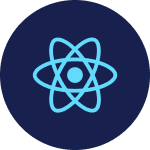
Master AI Prompting for Stunning UI
Learn how to leverage AI tools like Aura for creating beautiful designs, working with templates, and experimenting with advanced prompts. A concise guide for designers and developers to level up their skills.
10 hrs

Build SwiftUI apps for iOS 18 with Cursor and Xcode
In this course, we'll explore the exciting new features of SwiftUI 6 and Xcode 16 for building iOS 18 apps. From mesh gradients and text animations to ripple effects, you'll learn how to create polished, highly custom apps using the latest workflows. We'll also dive into using Cursor and Claude AI for AI-driven coding, helping you start strong and customize your apps.
5 hrs

Create your Dream Apps with Cursor and Claude AI
Learn to build your dream web apps from the ground up using Cursor, Claude AI, and a suite of powerful AI tools. This course covers everything you need, including React for frontend development, Firebase for backend integration, and Stripe for handling payments. You’ll also dive into advanced AI tools like Claude Artifacts, Galileo AI, v0.dev for UI, Ideogram for design generation, and Cursor Composer for full-scale development.
6 hrs
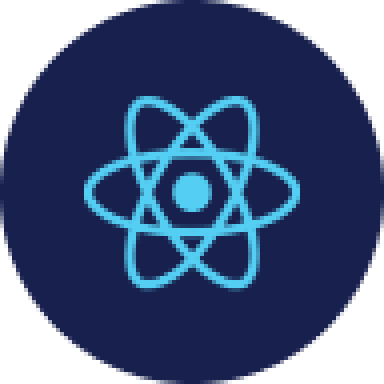
Build a React Site from Figma to Codux
In this course, you'll learn to build a website from scratch using Codux, starting with a Figma template. You’ll master responsive design, collaborate with developers on a real React project, export CSS from Figma using Locofy, set up breakpoints with media queries, add CSS animations, improve SEO, create multiple pages with React Router, and publish your site. By following best practices, you’ll bridge design and development, improve your web design skills.
2 hrs

Create 3D UI for iOS and visionOS in Spline
Comprehensive 3D Design Course: From Basics to Advanced Techniques for iOS and visionOS using SwiftUI
3 hrs
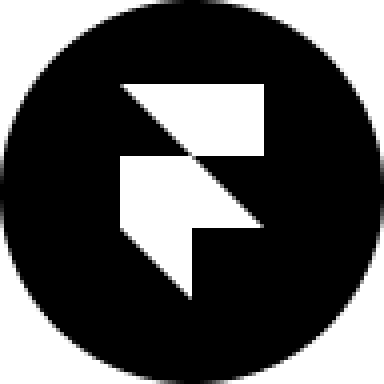
Master No-Code Web Design with Framer
In this free Framer course, you'll learn to create modern, user-friendly interfaces. Start with dark mode and glass designs, then move from Figma to Framer, using vectors and auto layout for responsive websites. Add animations, interactive buttons, and custom components with code. Finally, you'll craft a design system suitable for teamwork or solo projects, all in a straightforward and practical approach.
4 hrs

Build SwiftUI Apps for iOS 17
In this course, we’ll be exploring the fresh and exciting features of SwiftUI 5! As we craft a variety of iOS apps from the ground up, we'll delve deep into the treasure trove that is SwiftUI's user interface, interactions, and animations.
4 hrs
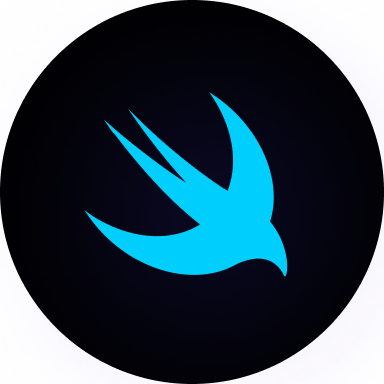
Build Beautiful Apps with GPT-4 and Midjourney
Design and develop apps using GPT-4 and Midjourney with prompts for SwiftUI, React, CSS, app concepts, icons, and copywriting
4 hrs

Build SwiftUI apps for iOS 16
Create animated and interactive apps using new iOS 16 techniques using SwiftUI 4 and Xcode 14
5 hrs

Build a 3D Site Without Code with Framer
Design and publish a responsive site with 3D animation without writing a single line of code
3 hrs

Create 3D Site with Spline and React
Design and code a landing page with an interactive 3D asset using Spline and CodeSandbox
1 hrs

Build an Animated App with Rive and SwiftUI
Design and code an iOS app with Rive animated assets, icon animations, custom layouts and interactions
3 hrs

Build a SwiftUI app for iOS 15 Part 3
Design and code a SwiftUI 3 app with custom layouts, animations and gestures using Xcode 13, SF Symbols 3, Canvas, Concurrency, Searchable and a whole lot more
4 hrs

Build a SwiftUI app for iOS 15 Part 2
Design and code a SwiftUI 3 app with custom layouts, animations and gestures using Xcode 13, SF Symbols 3, Canvas, Concurrency, Searchable and a whole lot more
3 hrs

Build a SwiftUI app for iOS 15
Design and code a SwiftUI 3 app with custom layouts, animations and gestures using Xcode 13, SF Symbols 3, Canvas, Concurrency, Searchable and a whole lot more
4 hrs

React Livestreams
Learn how we can use React Hooks to build web apps using libraries, tools, apis and frameworks
4 hrs

Design Founder Livestreams
A journey on how we built DesignCode covering product design, management, analytics, revenue and a good dose of learning from our successes and failures
2 hrs

SwiftUI Advanced Handbook
An extensive series of tutorials covering advanced topics related to SwiftUI, with a main focus on backend and logic to take your SwiftUI skills to the next level
4 hrs
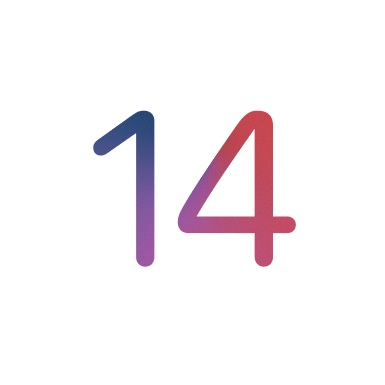
iOS Design Handbook
A complete guide to designing for iOS 14 with videos, examples and design files
2 hrs

SwiftUI Handbook
A comprehensive series of tutorials covering Xcode, SwiftUI and all the layout and development techniques
7 hrs

Build a web app with React Hooks
Learn how we built the new Design+Code site with React Hooks using Gatsby, Netlify, and advanced CSS techniques with Styled Components.
4 hrs

UI Design Handbook
A comprehensive guide to the best tips and tricks for UI design. Free tutorials for learning user interface design.
2 hrs
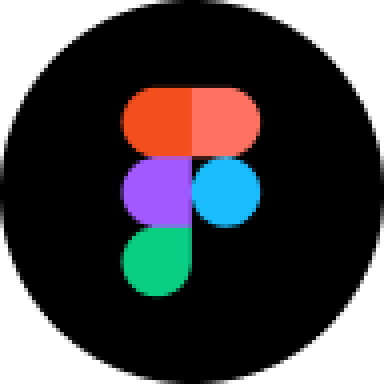
Figma Handbook
A comprehensive guide to the best tips and tricks in Figma. Not affiliated with or endorsed by Figma, Inc.
6 hrs

SwiftUI for iOS 14
Build a multi-platform app from scratch using the new techniques in iOS 14. We'll use the Sidebar and Lazy Grids to make the layout adaptive for iOS, iPadOS, macOS Big Sur and we'll learn the new Matched Geometry Effect to create beautiful transitions between screens without the complexity. This course is beginner-friendly and is taught step-by-step in a video format.
3 hrs

SwiftUI Livestreams
This is a compilation of the SwiftUI live streams hosted by Meng. Over there he talks and teaches how to use design systems, typography, navigation, iOS 14 Design, prototyping, animation and Developer Handoff.
19 hrs

UI Design Livestreams
This is a compilation of the UI live streams hosted by Meng. Over there he talks and teaches how to use design systems, typography, navigation, iOS 14 Design, prototyping, animation and Developer Handoff.
26 hrs

UI Design for Developers
In this course we'll learn how to use design systems, set up break points, typography, spacing, navigation, size rules for adapting to the iPad, mobile and web versions, and different techniques that translate well from design to code.
3 hrs

Build an app with SwiftUI Part 3
This course was written for designers and developers who are passionate about design and about building real apps for iOS, iPadOS, macOS, tvOS and watchOS. SwiftUI works across all of those platforms. While the code is not a one-size-fits-all, the controls and techniques involved can apply to all platforms. It is beginner-friendly, but it is also packed with design tricks and cool workflows about building the best UIs and interactions.
4 hrs

Build an app with SwiftUI Part 2
This course was written for designers and developers who are passionate about design and about building real apps for iOS, iPadOS, macOS, tvOS and watchOS. SwiftUI works across all of those platforms. While the code is not a one-size-fits-all, the controls and techniques involved can apply to all platforms. It is beginner-friendly, but it is also packed with design tricks and cool workflows about building the best UIs and interactions.
4 hrs
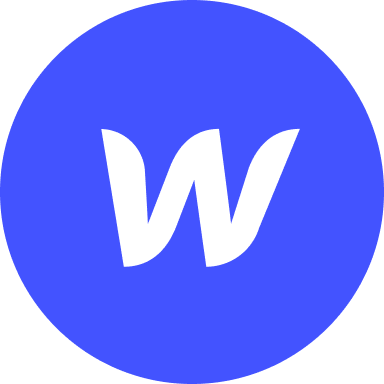
Build a full site in Webflow
Webflow is a design tool that can build production-ready experiences without code. You can implement CSS-driven adaptive layouts, build complex interactions and deploy all in one tool. Webflow also comes with a built-in content management system (CMS) and Ecommerce for creating a purchase experience without the need of third-party tools.
3 hrs
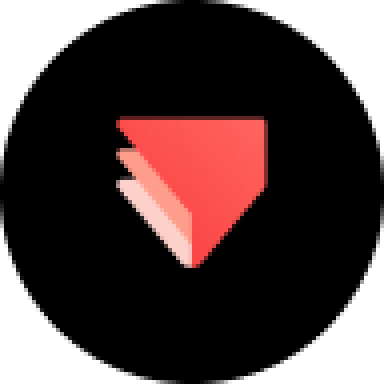
Advanced Prototyping in ProtoPie
ProtoPie is a cross-platform prototyping tool that creates prototypes nearly as powerful as those made with code, with half of the efforts, and zero code. It's perfect for designers who want to quickly experiment with advanced interactions using variables, conditions, sensors and more.
3 hrs

Build an app with SwiftUI Part 1
This course was written for designers and developers who are passionate about design and about building real apps for iOS, iPadOS, macOS, tvOS and watchOS. SwiftUI works across all of those platforms. While the code is not a one-size-fits-all, the controls and techniques involved can apply to all platforms. It is beginner-friendly, but it is also packed with design tricks and cool workflows about building the best UIs and interactions.
4 hrs

React Native for Designers Part 2
React Native is a popular Javascript framework that builds on top of React by using native components to create a real mobile app indistinguishable from one made using Xcode or Android Studio. The main difference with native development is that you get to use CSS, hot-reload, Javascript and other familiar techniques that the Web has grown over the past decades. Most importantly, you're building for both iOS and Android using the same codebase.
3 hrs

React Native for Designers
React Native is a popular Javascript framework that builds on top of React by using native components to create a real mobile app indistinguishable from one made using Xcode or Android Studio. The main difference with native development is that you get to use CSS, hot-reload, Javascript and other familiar techniques that the Web has grown over the past decades. Most importantly, you're building for both iOS and Android using the same codebase.
5 hrs

Design System in Figma
Learn how to use and design a collaborative and powerful design system in Figma. Design Systems provide a shared library of reusable components and guidelines and that will let you build products much faster
3 hrs

React for Designers
Learn how to build a modern site using React and the most efficient libraries to get your site/product online. Get familiar with Grid CSS, animations, interactions, dynamic data with Contentful and deploying your site with Netlify.
3 hrs

Swift Advanced
Learn Swift a robust and intuitive programming language created by Apple for building apps for iOS, Mac, Apple TV and Apple Watch
9 hrs

Learn Swift
Learn Swift a robust and intuitive programming language created by Apple for building apps for iOS, Mac, Apple TV and Apple Watch
4 hrs
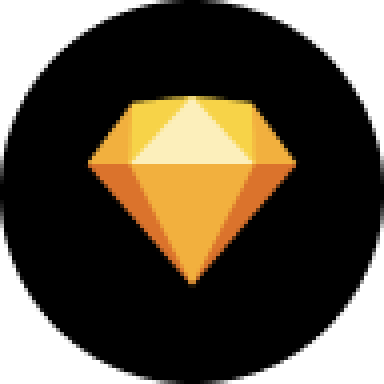
Learn Sketch
Learn Sketch a design tool entirely vector-based and focused on user interface design
5 hrs

Learn iOS 11 Design
Learn colors, typography and layout for iOS 8
1 hrs
